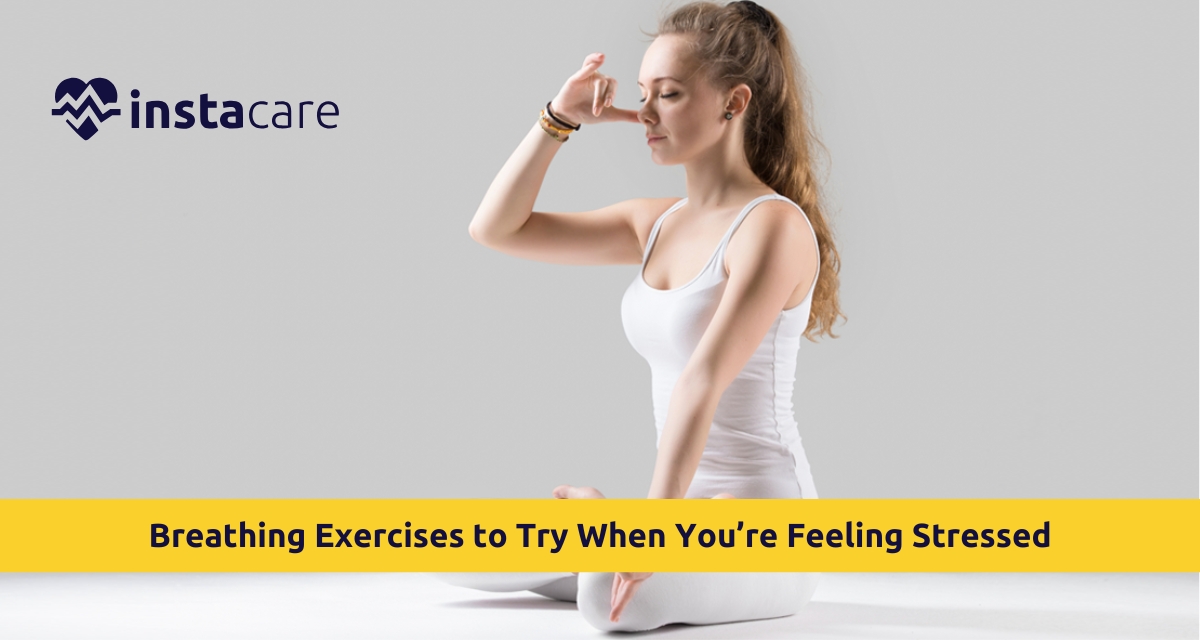Stress is something that almost everyone goes through. Know-how makes a huge difference in general well-being. On this subject, there are basic drills that can actually be very effective in a bid to conquer stress, create relaxation, and improve focus. Here, ten effective breathing exercises are explained to you so that you can incorporate them for yourself in the daily routine, which will one day reduce your stress levels and in turn you’re deteriorating mental health.
1. Diaphragmatic Breathing
General Description
In fact, diaphragmatic breathing often can be referred to as
abdominal breathing as it is an approach to using diaphragm to produce deeper
inhalation and exhalation. It can become very useful in discharging tension and
providing relaxation.
How to Do It
- Position: Sit or lie down comfortably.
- Hand Placement: Place one hand on your chest and the other
on your abdomen.
- Inhale: Breathe in through your nose, making sure the belly
rises when the chest does not
- Exhale: Let air out slowly out of your mouth
- Time: 5-10 minutes keeping track of if the abdomen and then
chest falls.
- This decreases the heart rate and lowers the blood pressure in order to really bring a profound sense of calm. It allows for increased capacity of the lungs and improved gas exchange throughout the body, thus it is quite a great technique for stress-relieving practice.
2. 4-7-8 Breathing
In the words
The 4-7-8 breathing was established by Dr. Andrew Weil,
which supposedly calms down the mind as well as relieves the body. It might be
useful to anyone, mainly those with anxieties or cases of insomnia.
How to Do It
- Position: Sit or lie comfortably.
- Inhale: Close your eyes. Breathe in through the nostrils for
a count of 4.
- Hold: Hold your breath for a count of 7.
- Exhale: Empty the lungs of air by exhaling through the mouth
for a count of 8.
- Repeating: Repeat this cycle four times.
Benefits
This exercise loosens you out from stress and anxiety. Thus,
it prepares you amply for temporary tough times. You sleep much faster and even
more soundly too.
3. Box Breathing
What it is
Box breathing or square breathing refers to the exercise used by most athletes and officers to empty your head and direct focus. Such a technique made people become considerably focused and manage levels of stresses. How it's done
- Sit comfortably with your back straight
- Breathe in: Breathe in through your nose for a count of 4
- Hold: Hold your breath for a count of 4
- Exhale: Breath out through your mouth for a count of 4
- Hold: Hold your breath once more for a count of 4
- Repeat: Repeat this cycle for some minutes
Benefits
Box breathing is the technique which reduces the level of anxiety
so that one can focus and pay attention. It is done just before the stressful
situations such as presentation or exams.
4. Alternate Nostril Breathing
What is it?
All through the application of Nadi Shodhana which is also
known as the alternate nostril breathing exercises. This is a traditional form
of yogic science deployed with a purpose of harmonizing the energies in the
body, clarity in the mind, and relaxation in the body.
How to do it
- Sit comfortably with a straight spine.
- Put your thumb close the right nostril.
- Inhale left. Slowly breathe in through the left nostril.
- Switch. Using your right ring finger, close the left nostril
while opening the right one.
- Exhale right. Slowly breathe out from the right nostril.
- Inhale right. Slowly breathe in through your right nostril.
Close.
- Exhale left. Open up the left nostril and slowly breathe out
through it.
- Continue: Do so for a couple of minutes
Benefits
This method brings relaxation, calms the nerves, and
clarifies the mind. It also brings about an energy balance within the body,
which can prove very useful when in stressful conditions.
View More: What Can Cause Breathlessness and How Does It Feel Like
5. Progressive Muscle Relaxation
What's It
Not a breathing exercise although resembling one,
progressive muscle relaxation integrates deep breathing with the contraction
and relaxation of muscles in the body to encourage relaxation.
How to Do It
- Location: Find a silent place and lie or sit down in a
convenient position.
- Contract: Breathe in thoroughly while contracting one group
of the muscles, such as fists for 5 seconds
- Relax: Breathe out, then relax your muscles
- Repetition: Perform all of them in all the groups of muscles
working from toe up through your head.
- Time: Do this for 5-10 minutes.
Benefits
It helps loosen the body's tension and even in a deepened
relaxed state. It is also a good exercise for those who have tension in their
bodies.
6. Purse-Lipped Breathing
Description
Pursed-lipped breathing is an exercise that assists in slowly
regulating the respiration as well as providing better oxygenation. Hence, it
can be helpful in relaxing against stress.
How to Do
- Position: Sit comfortably, relaxing the shoulders.
- Inhale: Breathe in slowly through your nose for 2 counts.
- Purse Lips: Purse your lips as if you’re about to whistle.
- Exhale: Exhale slowly and gently through your pursed lips
for 4 counts.
- Repetition: Continue for several minutes.
Benefits
This method can improve lung function, reduce feelings of
stress and anxiety, and hence make it easier to cope with difficult situations.
7. Visualization Breathing
Overview
Visualization breathing it is a technique that involves both
deep breathing and mental imaging with aim of relaxing an individual.
How to Do It
- Sit comfortably, close the eyes.
- Inhale: Breathe in-depth; imagined some peace environment,
such as a beach or forest.
- Retain: Maintain the breath for some seconds, which invokes
the visualization process.
- Exhale: Exhale gradually with a release from your stress and
tension, which also releases all bad thoughts from your body.
- Time: Do this process for a few minutes.
Benefits
This activity brings relaxation and ensures your mind drifts
away from stressors and gives the sensation of peace.
8. Counting Breath
Introduction
Breath counting is a mindfulness practice that makes one
keep track of their breath to improve relaxation as well as relieve stress.
How to Do
- Position: Relax and sit properly with your eyes closed.
- Inhalation: Deeply inhale and count as you exhale
"one"
- Continue Counting: Count for every breath for up to five.
- Reset: After reaching five, start back at one.
- Duration: Repeat for 5 to 10 minutes.
Benefits
This technique helps clear your mind and reduces anxiety by
centering your attention on your breath.
9. Self-Compassion Breathing
Overview
Self-compassion breathing incorporates affirmations to
foster kindness toward oneself while reducing stress and anxiety.
How to Do It
- Sit comfortably and take a deep breath.
- Inhale with Affirmation: Inhale and think, "I am
safe" or "I am enough."
- Exhale Negativity: Exhale while focusing on letting go of
negativity or stress.
- Repetition: Repeat affirmations for 5 to 10 minutes
- Benefits
- This exercise develops self-compassion and reduces the feeling of stress, creating emotional comfort.
10. Mindful Breathing
General Instructions
The practice of mindfulness in the act of taking a breath is
known as mindful breathing, in which you get to focus on your breathe and the
current moment.
How to Do It
- Position: Sit comfortably and close your eyes.
- Inhale: Breathe in slowly, focusing on the sensation of air
filling your lungs.
- Exhale: Breathe out slowly, focusing on the sensation of air
leaving your body.
- Refocus: If your mind starts to wander, gently bring your
focus back to your breath.
- Duration: Continue for 5 to 10 minutes.
Benefits
This practice cultivates mindfulness and can really reduce
the level of stress and anxiety.
Conclusion
If practiced, these breathing exercises would be quite
effective in improving management of stress at a very high rate. With these
practices, you'll become better at accessing when the need comes along for
having that calm and collected moment again, which then increases your
capabilities toward improving wellness as a whole. You might be at the workplace,
house, or perhaps while on-the-go, yet what's great about the practice of a few
breathing exercises is it changes your life entirely. Therefore, by giving
emphasis to the mentioned exercises, one precondition toward stress and the
quality of life is improved.
Please book an appointment with the best Psychologist in Lahore, Karachi, Islamabad, and all major cities of Pakistan through InstaCare, or call our helpline at 03171777509 to find the verified doctor for your disease.

